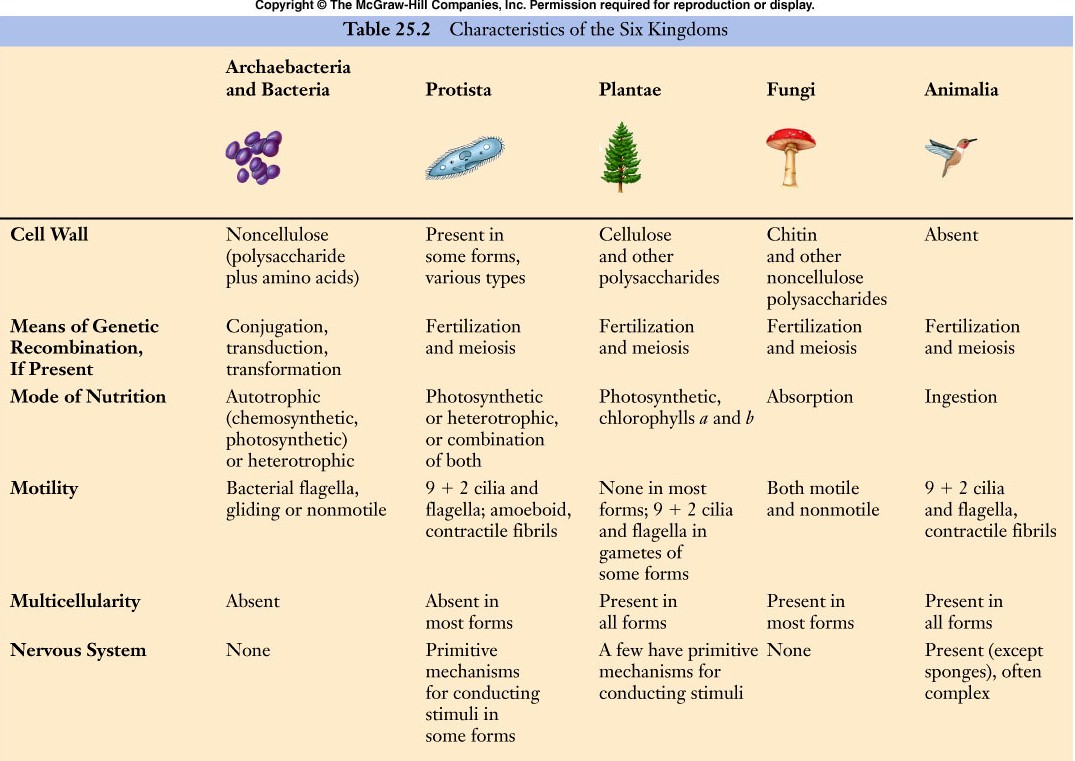-
Gallery of Images:

-
Examples of invertebrate animals in this category are underwater sponges. Owing to the large number of vertebrate and invertebrate animal species, it is practically impossible to make an exhaustive list that accounts for all animals. Domain: Eukarya Kingdom: Protista Phylum: plasmodroma Class: sarcodina Order: amoebida Family: amoebidae Genus: Amoeba Species: Amoeba proteus Three examples of fungi are mushrooms, mold, and mildew. None ofthese fungi should be eaten. Not all types of mushrooms are meantto be eaten even though some are. Examples of dimorphic fungi include Coccidioides immitis, Histoplasma capsulatum, and Blastomyces dermatitidis. Coccidioides immitis (see Figure 11) is a dimorphic fungus that causes coccidioidomycosis, a disease endemic to the southwestern United States. An estimated 100, 000 infections occur annually in the United. Fungi Examples AM Fungi Scientific Name: Arbuscular mycorrhiza AM fungi are unique by their formation of vesicles that capture nutrients from the soil. They form a symbiotic relationship with plants that can be found in 80 of the plant families. They are native to temperate forsets and tropical rainforests. Parasitism in plants and insects. In contrast with the saprotrophic fungi, parasitic fungi attack living organisms, penetrate their outer defenses, invade them, and obtain nourishment from living cytoplasm, thereby causing disease and sometimes death of the host. Most pathogenic (diseasecausing) fungi are parasites of plants. With more than 800 species of Zygomycetes fungi, they can be found on everything from animal abrasions to common white bread. One of the most unique characteristics of zygomycetes is the ability to reproduce either sexually by the combination of two spores, or asexually, like most other fungi. A fungus is a member of a large group of organisms that includes microorganisms such as yeasts and moulds, as well as the more familiar mushrooms. These organisms are classified as a kingdom, Fungi, which is separate from plants, animals, and bacteria. The discipline of biology devoted to the study. Cool and Interesting Facts about Fungi. 08) 26 votes Athletes Foot, Oral Thrush, Vaginal Thrush, and Ring worm infection of skin are some common examples of disease caused by fungi. Fungi also cause harm to the industry of silk as they cause killing of silkworms early 1800s in Europe (this, also, is the first ever evidence of. Despite the common notion that bacteria and fungi are infectioncausing proponents, a variety of species are beneficial to people. In many cases, they are common food sources. For example, fungi have cell walls like plants, but their cell walls contain a protein called chitin, which is found in animals like beetles but not in plants. Microscopic examples include yeasts such as those that make beer, wine and cheese, as well as the organisms that cause athlete's foot and ringworm. Fungi feed on decaying matter, food and living organisms including humans. Fungi are abundant in the environment and some infect humans, causing disease. Surface infections such as athletes foot and fungal nail infections are common. Fungi When referring to vegetables, fungi are commonly known as mushrooms. Examples of mushroom varieties are button, Swiss brown, portobello, shitake, oyster (phoenix tail), enokitake, white ear (jelly fungus), black ear (cloud or wood ear). Fungi are the group of single celled and multicelled organisms that are nonmotile. Fungi provide essential nutrients for the growth of plants. Fungi are used in the production of chemicals, in the drug manufacturing industries and also have medicinal uses. Top 10 Incredible FungusesTop 10 Incredible FungusesFunguses have caused some of the greatest human tragedies in history but they have also been behind some of the greatest scientific discoveries. This list looks at ten significant funguses. Some have helped man, some have hindered man, and some are just plain awesome. If you wish to add to the list, be sure to do so in the. The agents of mycetoma are all filamentous fungi which require 710 days for visible growth on the culture media and then another several days for specific identification. These fungi are identified by the colonial morphology, conidia formation and biochemical reactions. The question asked was: 'What are some examples of harmful fungi and beneficial fungi? ' Harmful: The Death Cap mushroom (Amanita phalloides) is a deadly poisonous basidiomycete fungus, one of many in the genus Amanita. Fungi and Diseases Fungi is a large group of eukaryotes, includes yeast, mushrooms, lichen, Penicillium fungus etc. Fungus are usually very small, and cannot be seen by the eye. Mushrooms and fungi colonies are infact a lot of fungus grow together. Best Answer: Some fungi provide numerous drugs (such as penicillin and other antibiotics), foods like. Some Fungi cause a number of human, plant, and animal diseases, while the others provide numerous drugs (such as penicillin and other antibiotics), foods (e. , various Mushrooms, Truffles and Morels, and various Yeasts which are used in bread, champagne, and beer). The kingdom Fungi includes a diverse group of organisms that are neither plant nor animal. They absorb nutrition from other organisms while playing the important role of ecological decomposers. This is a list of 10 examples of physical changes. Physical changes involve a new form or shape of matter, but no chemical reaction. This is a list of 10 examples of physical changes. 10 Examples of Physical Changes. Examples of Chemical and Physical Changes Get examples of changes in matter sidebyside. We therefore felt it appropriate to cite honourable mentions for fungi just missing out on the Top 10 list, including Phakopsora pachyrhizi (Goellner et al. , 2010) and Rhizoctonia solani (Gonzalez et al. , 2011; Vilgalys and Cubeta, 1994), both clearly important. Ascomycota is the largest phylum of Fungi, with over 64, 000 species. Pezizomycotina fungi have fruiting bodies similar to mushrooms and include morels, truffles, ergot and cup fungi. Truffles (Tuber genus) are one of. This article provides a list of diseases caused by fungi, that occur in humans. HealthHearty Staff Fungi is the name given to a large group of eukaryotes, including microscopic organisms such as yeast and molds, as well as complex, multicellular mushrooms. Examples of helpful bacteria are E. Coli (when used for the digestion process), Streptomyces, and Rhizobium. Examples of harmful bacteria are E. Coli (when contaminating food), Listeriosis, and. Examples of these are truffles (Tuber sp. ), Agaricus, Shiitake (Lentinula edodes), Straw mushroom (Volvariella volvacea). Also, yeasts are fungi that help in bread and winemaking. Fungi are also sources of antibiotics, like penicillin from the fungus Penicillium. Fungi may resemble plants, but they are a different kingdom of eukaryotes. The main difference is that fungi do not undergo photosynthesis. Most get their nutrition from decomposed plant matter. This list was developed from the index of a medical book called A Colour Atlas of Pathologic Fungi by D. Some of these fungi are real buggers to get rid of but homeopathics seem to do the best work on them. Types of Fungi Scientists often divide fungi into four groups: club fungi, molds, sac fungi, and imperfect fungi. Some of the more common fungi that you are likely to see or use everyday are described below. this is also known as magic mushrooms. This mushroom is commonly found on lawns and is native to the Pacific Northwest region of the US. Kingdom: Fungi Phylum: Ascomycota Class: Saccharomycetes Order: Saccharomycetales Family: Saccharomycetaceae Genus: Saccharomyces Species: S. cerevisiae Most popular fungi (including lichens). View videos and photos of 50 of the most popular fungi (including lichens) in nature. Learn more about their biology, threats and conservation. The kingdom of fungi is divided into four major groups: conjugating fungi, sac fungi, club fungi, and imperfect fungi. Mushrooms, molds, yeasts, and mildew are all fungi. Biologists have estimated that there are more than 200, 000 species of fungi in nature, although only about 100, 000 have been identified so. Notable fungi include yeast, also known as saccharomyces, penicillium chrysogenum, aspergillus oryzae and fusarium venenatum. Various fungi are used in foods and medicines, in contrast to fungi that serve as pests. Yeast is a unicellular fungus that reproduces asexually. This list is not exhaustive and does not contain many fungi that, although not deadly, are still harmful. For a less detailed list on fungi that include nondeadly poisonous species, see List of poisonous fungi. A word fungus, plural fungi, is adopted from Latin fungus (mushroom), from Greek sphongos (sponge), and refers to a physical appearance of fungi. Mycology (from Greek mykes fungus) is a branch of biology dealing with fungi. Some fungi are beneficial: they decompose dead organisms, they can be used in production of food, they are part of normal human flora. 5 examples of fungi are that: 1) They are of the Eukarya domain2) They are Eukaryotic3) It is both unicellular and multicellular4) It is a Heterotroph5) It causes bacteria. Yeast and mushrooms are two of the most common examples of fungi organisms. Fungi organisms can be decomposers, plant parasites and can cause diseases in humans and animals. Athlete's foot is caused by a fungus, and penicillin is made from a fungal mold. 70 Totally Amazing Common Names for Fungi. Elaphocordyceps ophioglossoides in case you didnt knowis a. There are many diseases caused by fungi. Many times fungi are inhaled and can impact the lungs or get into the blood stream. Below is a list of some of them. Coccidioidomycosisis caused by. In some fungi, threads merge to form a larger structure called a fruiting body that sometimes consists of a cap and stalk e. in the cases of many mushrooms and toadstools see examples of wild fungi. Bacteria are the plural of bacterium, which are microscopic onecelled organisms. They are found everywhere and can be harmful, as in infections; or they can be beneficial, as in fermentation or decomposition. Five types of bacteria are: Coccus, Bacillus, Spirillum, Rickettsia, and Mycoplasma. 10 examples of fungi keyword after analyzing the system lists the list of keywords related and the list of websites with related content, in addition you can see which keywords most interested customers on. There are millions of different fungal species on Earth, but only about 300 of those are known to make people sick. 13 Fungal diseases are often caused by fungi that are common in the environment. Fungi live outdoors in soil and on plants and trees. Almost 500 international experts have worked together to develop a ranking system of the ten most important phytopathogenic fungi on a scientific and economic level. Some examples of autotrophs include plants, algae, and even some bacteria. Autotrophs are important because they are a food source for heterotrophs (consumers). Now, let's look at 10 examples of autotrophs all around us. From dandelions to oak trees, we cannot escape the presence of plants. 10) Roles of fungi and other microbes In tropical forests all organisms are dependent to some extent on bacteria and fungi. Some animals such as wood and leafeating insects depend on symbiotic gut microbes to digest cellulose in their food supply, while other insects utilize fungi directly as. Basidiomycota, large and diverse phylum of fungi (kingdom Fungi) that includes jelly and shelf fungi; mushrooms, puffballs, and stinkhorns; certain yeasts; and the rusts and smuts. Basidiomycota are typically filamentous fungi composed of hyphae. Most species reproduce sexually with a clubshaped sporebearing organ that usually produces four sexual spores (basidiospores). Here is a list of thirtyfive thallophytes found in fungi: 1..
-
Related Images:











